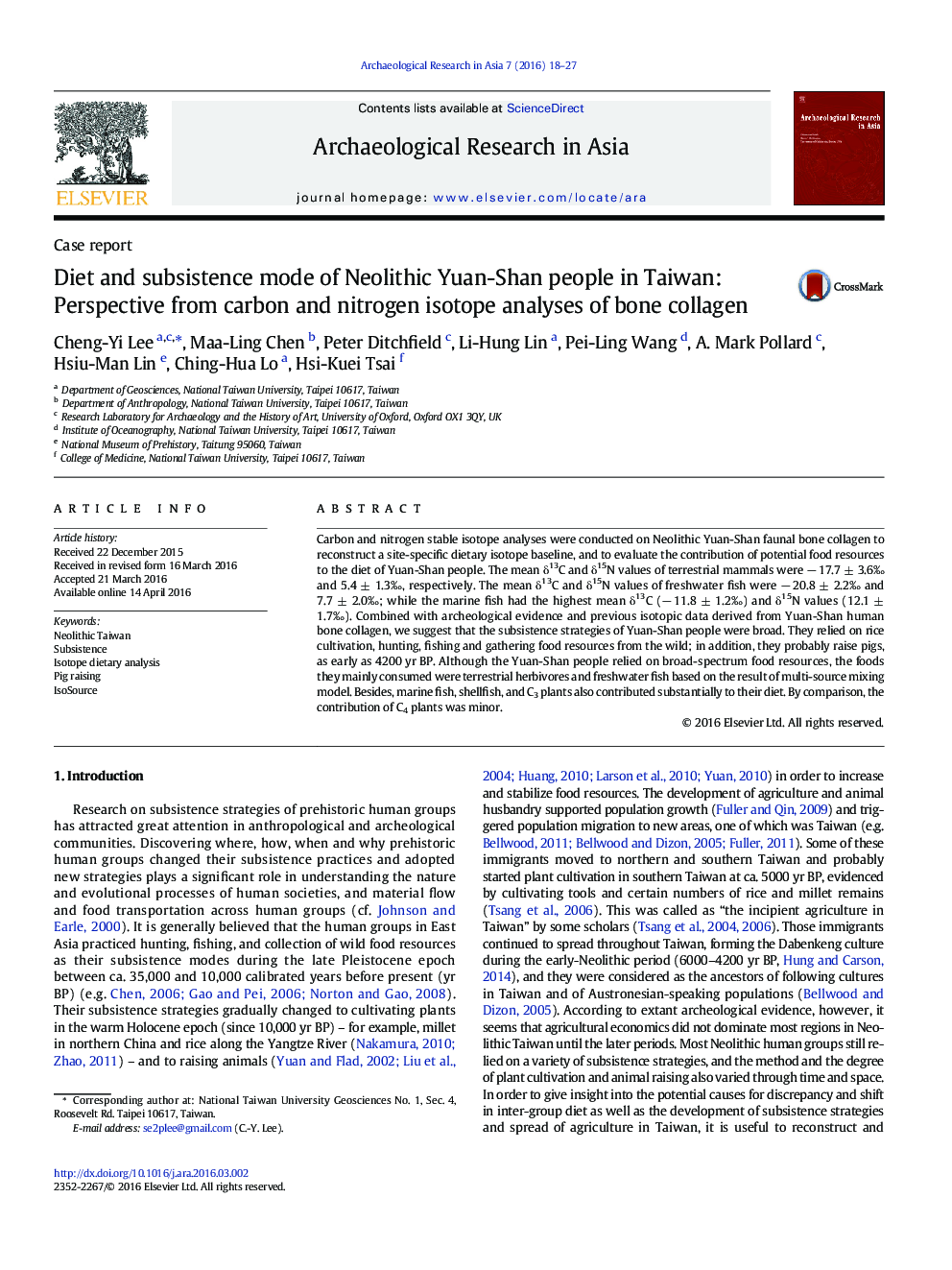| Article ID | Journal | Published Year | Pages | File Type |
|---|---|---|---|---|
| 1034138 | Archaeological Research in Asia | 2016 | 10 Pages |
Carbon and nitrogen stable isotope analyses were conducted on Neolithic Yuan-Shan faunal bone collagen to reconstruct a site-specific dietary isotope baseline, and to evaluate the contribution of potential food resources to the diet of Yuan-Shan people. The mean δ13C and δ15N values of terrestrial mammals were − 17.7 ± 3.6‰ and 5.4 ± 1.3‰, respectively. The mean δ13C and δ15N values of freshwater fish were − 20.8 ± 2.2‰ and 7.7 ± 2.0‰; while the marine fish had the highest mean δ13C (− 11.8 ± 1.2‰) and δ15N values (12.1 ± 1.7‰). Combined with archeological evidence and previous isotopic data derived from Yuan-Shan human bone collagen, we suggest that the subsistence strategies of Yuan-Shan people were broad. They relied on rice cultivation, hunting, fishing and gathering food resources from the wild; in addition, they probably raise pigs, as early as 4200 yr BP. Although the Yuan-Shan people relied on broad-spectrum food resources, the foods they mainly consumed were terrestrial herbivores and freshwater fish based on the result of multi-source mixing model. Besides, marine fish, shellfish, and C3 plants also contributed substantially to their diet. By comparison, the contribution of C4 plants was minor.
